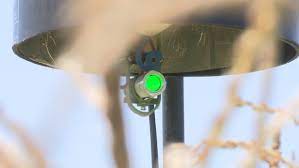Us city-slickers – and suburb-slickers – likely don’t spend a lot of time thinking about new technology as it applies to agriculture. Yet few industries are more pervasive, or more critical to our wellbeing. Emerging technology in this arena is helping tackle myriad environmental, economic, and food security issues as the world population increases and places greater demands on the agricultural industry to operate in a more productive and efficient manner.
In a recent article on embedded.com, Silicon Lab’s Chad Steider outlined a number of use cases where wireless technology is deployed to make agriculture smarter. Sensors set out in fields gather environmental data to help determine optimal crop rotation and yields, and can be used to identify diseases and infestations before they can destroy an entire crop. On the inside, sensors can also be used to monitor real-time conditions in greenhouses and adjust lighting, temperature, and humidity as needed. Beyond planted crops, sensors can help farmers and ranchers track their herds and monitor animal health.
Overall:
While IoT and smart sensor technologies are a goldmine for highly relevant, real-time data, the use of data analytics helps farmers make sense of it and come up with important predictions around crop harvesting time, the risks of diseases and infestations, yield volume, and more. While farming is inherently highly dependent on weather conditions, data analytics tools help make farming more manageable and predictable. (Source: embedded.com)
Steider also provides a discussion of Wi-SUN Technology, “a leading open-source, open-standard protocol for smart city and smart utility applications and is primed for smart agriculture as well.” This section makes for an interesting read.
His article prompted me to poke around and look for additional news on innovation in the agri-tech sector, which led me to a piece from MassChallenge (an organization focused on tech innovation and entrepreneurship) that was published earlier this year. Here’s some of the technologies they see on the horizon.
First up: Bee Vectoring Technologies. Pollination is critical to the production of many crops, including blueberries, apples, and sunflowers.
BVT uses commercially reared bees to deliver targeted crop controls through pollination, replacing chemical pesticides with an environmentally safe crop protection system.
The system doesn’t require spraying water or the use of tractors. Instead, the scientifically designed bumblebee hive allows bees to pick up a trace amount of pest control powders on their legs to spread as they travel within the field.
Then there’s Precision Agriculture (which was also mentioned by Chad Steider in his embedded.com piece.) Precision Agriculture focuses on using big data captured by remote sensors to help farmers make better crop and animal management decisions that can be carried out using drones, robots, and other automation approaches.
For indoor vertical agriculture, hydroponics and aeroponics enable indoor farming where farmers can grow crops on stacked up shelves.
There has been a great deal of concern over the use of genetically modified food, and whether it’s harmful to human health and to the environment. In the near future, minichromosomes will be able to “enhance a plant’s traits without altering the genes in any way.”
In short, minichromosome technology allows genetic engineers to create crops that require fewer pesticides, fungicides, and fertilizers, reducing reliance on harmful chemicals. It also lets them achieve bio-fortification and enhance a plant’s nutritional content.
Laser scarecrows may well be my favorite innovation on the MassChallenge list. While it was always fun when, as kids, we spotted a scarecrow in a farmer’s field, stuffing near-rag clothing with straw may not have been all that effective.
After discovering that birds are sensitive to the color green, a researcher from the University of Rhode Island helped design a laser scarecrow, which projects green laser light. The light isn’t visible by humans in sunlight, but it can shoot 600 feet across a field to startle birds before destroying crops.
Early tests with laser scarecrows found that the devices can minimize crop damages by reducing the bird population around farmlands by up to 70% to 90%.
Interesting! I don’t recall ever seeing an old-school scarecrow wearing green.
While us city- and suburb-slickers may not think about agricultural technology all that often, it’s good that others are doing it. That said, it’s late summer, and in Central New York, where I live, there is plenty of farming. That means we’ll be able to enjoy native corn and tomatoes, and, in another couple weeks, our local apples. Thankfully, there’s technology that will enable us to continue to enjoy this bounty!

